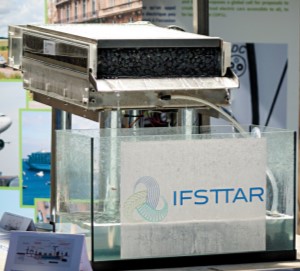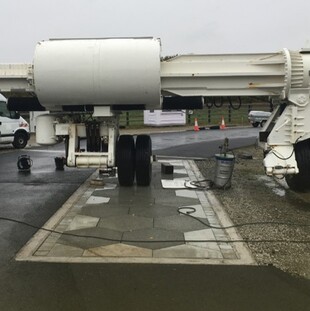Materials for innovative uses
The two objectives of this theme are to develop new materials, or new uses for existing materials, to help create innovative infrastructures, particularly for roads and railways.
In the road sector, this is fully in line with the 5th Generation Road project.
Overall, this research theme is rooted in MIT’s core activity, namely material science, to optimize the use of materials, combined with structural studies. The adopted strategy covers mix design and characterisation in the laboratory, the establishment of behavioural laws and laws that describe the behaviour of interfaces when several materials are assembled, modelling, prototyping and support for construction site demonstrators, making it possible to move from a low Technology Readiness Level (TRL) to a relatively high one (prior to possible tests at Transpolis, or even at real sites). This type of research is well served by the environment that results from the synergy that exists between Université Gustave Eiffel's Nantes-based teams, in particular between the LAMES, SII, EASE and UMRAE laboratories.
In the field of railways, but also in that of electric roads, the MIT laboratory can also make use of the Sysife platform which is run by a joint team from the MIT and SII laboratories.
The MIT lab is thus very much involved in developing:
- cementitious materials that can be excavated with a pickaxe to form removable urban pavements (RUP);
- semi-transparent wearing courses for solar pavements and porous materials allowing optimal flow of the heat transfer fluid (with a prototype presented at COP 21, European project ETN SMARTI);
- a long-life railway structure for a high-speed line (LGV) using concrete slabs. This is the New Ballastless Track (NBT) project;
- a railway track in which the rail is buried in asphalt (FUI Reves project) to increase the headroom in existing tunnels on the network;
- an electification system in which rails are embedded in pavements (Alstom process).
This theme is continuing on the following topics:
- the development of a hybrid roadway which converts solar energy into electricity with photovoltaic panels and thermal energy by conduction;
- a study of the behaviour and aging of pavements with rigid inclusions (doctoral thesis by T. Alves in the framework of the Cofecub Acces4futurr Franco-Brazilian cooperative project [2019-2022]). This fairly general study is important for the future, because next generations of pavements will contain more and more objects that create mechanical discontinuities (sensors, various electrification systems, etc.);
- the development of functionalised removable urban pavements providing various services to users. The ISTREET / CUD-SF project (PIA / Ademe [2017-2022]) on removable porous pavements is a first step;
- the burial of inductive electrification systems within cement concrete or bituminous pavements, in the framework of the INCIT-EV project (H2020, [2020-2024]) ...
LGV Railway

Hybrid solar roadway

Rails for electric pavements

Removable Urban Pavements (RUP)
